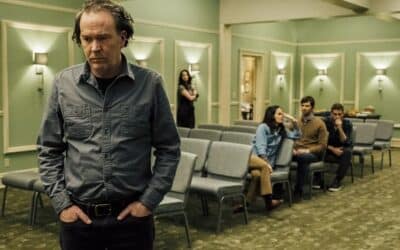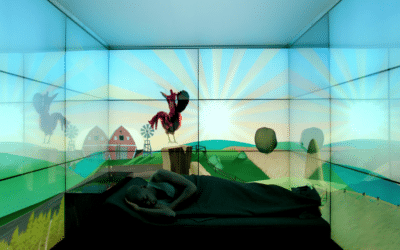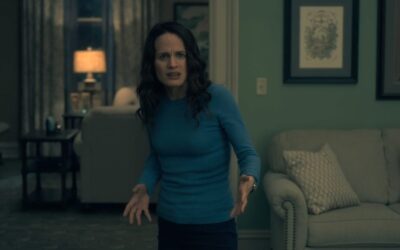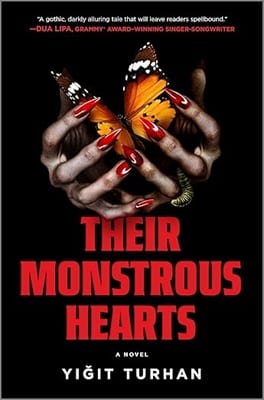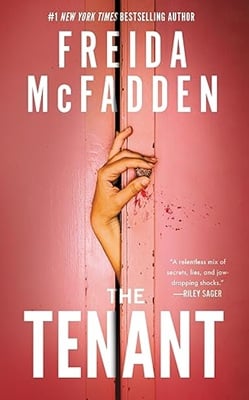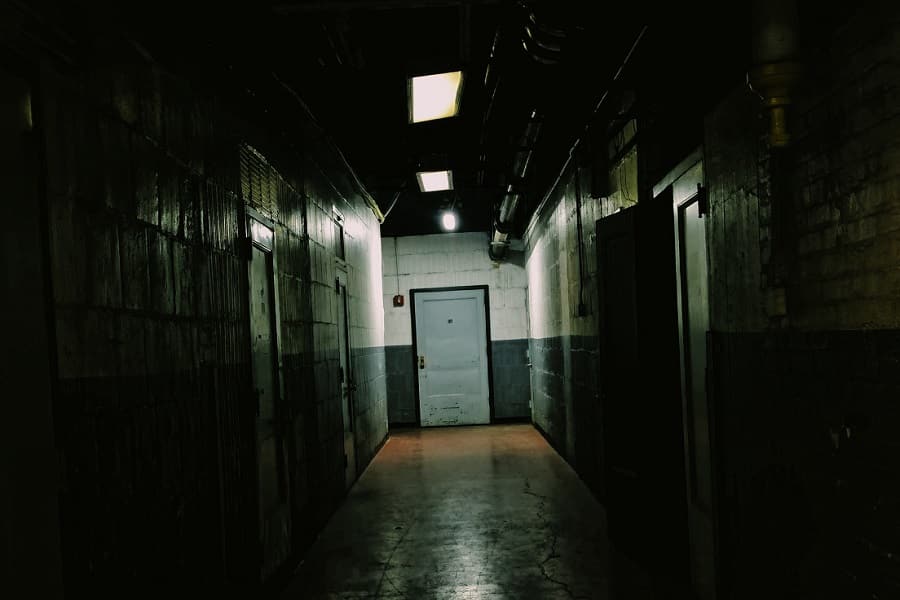
Feature
Worlds of Horror
Christopher Sweet
“Go then, there are other worlds than these.”
-Jake Chambers, The Gunslinger by Stephen King
The world that the poor, unsuspecting characters in a horror story find themselves in can be their greatest enemy or a lifesaving ally. Whether the dumb jock is being gutted in cabin thirteen, the intrepid explorer is disturbing ancient beings in the depths of the Mariana Trench, or the alcoholic writer is hunting his family through a hotel in the mountains, the world these characters live in imbues their story with magic.
These worlds are often tempting, pleasurable places. In many cases, the scene of the most horror is where the protagonists most want to be at the beginning of their story. At the start of Stephen King’s The Shining, the Overlook Hotel is what will save the Torrance family and Jack’s career as a writer. Spoiler, it didn’t.
Horror, as a genre, is fertile ground for imagination and has dug its claws into places as mundane as a rundown cottage and more bizarre than a village of fish people. Places such as…
The Haunted House
Arguably the most common location for a tale of horror, the haunted dwelling, whether it’s a house, mansion, or castle, can be one of the most unsettling settings for a story. It also seems to be one of the most appealing—people flock in droves to haunted houses around the world, shelling out ten or fifteen bucks to be terrified for just a few minutes.
Haunted houses ring some of our deepest psychological warning bells. They take a place meant to make us feel secure and instead compel us feel trapped, isolated, even hunted. Sounds we’re used to hearing every day can take on sinister meaning in the context of a haunted house.
In Jungian psychology, houses are a representation of ourselves; what happens within their walls reflects what is happening within us.
A good haunted house story is ultimately about the people who are being haunted and their own personal demons, as illustrated in Shirley Jackson’s The Haunting of Hill House. Eleanor, the story’s protagonist, comes to the titular mansion as part of Dr. Montague’s experiment looking for connection and a place to belong, which she ultimately finds in Hill House, for better or worse.
Space / Underwater / Underground
There are obviously big differences between the cosmos, the sea, and the bowels of the earth but all three share common elements conducive to horror. For starters, all three can imbue a story with a sense of isolation. Who can forget Ripley drifting through space, alone in the final frames of Alien?
Deep underwater, as in outer space, nobody is coming to the rescue and resources are limited. In his novel The Deep, Nick Cutter does a tremendous job of conveying the sense of isolation and confinement that makes the depths of the ocean so terrifying.
All three settings limit our physical abilities; we can’t even breathe underwater or in space without aid. Provided one has oxygen, the next hurdle is to actually move around in any of these places.
Underground arguably gives one the most chance of survival but even then, there are only so many places to go and you can bet that if the protagonist is underground, they’ll have to squeeze through a narrow passage, giving anyone watching or reading a serious bout of claustrophobia.
Finally, all three locales are largely unexplored; most of what makes them so frightening is that we really don’t know much about what lurks in their shadows. It could be the bizarre, reptilian monsters described in H.P. Lovecraft’s The Nameless City skulking about underground, the abomination dwelling off the coast of Mauritius in Brian Keene’s Pressure, or the gargantuan, horror-filled object drifting through space in David Wellington’s The Last Astronaut.
The Past / The Future
Stories taking place in the future, like those set in space, often cross into the territory of horror’s close cousin, science fiction. In the future, anything is possible; the world could be taken over by vampires as in Richard Matheson’s I Am Legend or turned into the stage of a lethal gameshow in The Running Man by Stephen King.
The past is even more frightening; it holds practical and technological limitations that can be as scary as the monsters lurking in their shadows. We’re so enlightened and technologically enabled in our time that it can be horrifying to think about how we lived without smartphones and the Internet, let alone electricity and running water.
Sociological limitations can be as frightening as history’s inhuman lack of iPhones. Alma Katsu’s The Hunger expertly highlights the dangers of cultural ignorance and the pursuit of the fabled “better life” as it follows the Donner Party along the Oregon Trail to their gory and inevitable end.
Cabins in the Woods
Cabins, camps, and cottages serve to separate characters from the protection of the modern world while also providing a modicum of refuge. These places are often located deep in the woods—traditionally dangerous territory, especially in folklore.
Cabins simultaneously protect us from the elements while trapping us with ourselves. The cabin offers refuge and forces characters to confront themselves and each other as they fight off ghosts, demons, or monsters.
Characters in cabins often face an impossible choice; remain in the security of the cabin or risk fleeing through the dark woods. Those doomed kids in The Evil Dead choose to remain in the cabin infested with Deadites because being outside is so much worse; it’s where the Kandarian Demon, the thing responsible for raising the Deadites, roams.
Perhaps these places are so common to horror because of their multi-faceted nature. They serve the functions of the haunted house, underground, and the past all in one package.
Often remote and rundown places, cabins strip characters of resources they would normally have available to them. This is emphasized when the bridge goes out, snow wipes out the roads, the car dies, or even when an energy field blocks any means of escape as in the 2011 film The Cabin in the Woods.
Dreams
A common thread running through many worlds of horror is the lack of resources or the limitation of abilities inflicted on the characters. Can’t breathe in space or underwater, no cellphones in the past, cut off from civilization in our cabins in the woods.
In dreams, our resources are endless. Unfortunately, so are our nightmares. Even after three films, when the kids finally start to harness the power of their imaginations and fight back in Dream Warriors, Freddy Krueger is still capable of conjuring horrors capable of ending their lives.
Most of us have heard Edgar Allen Poe’s line from A Dream within a Dream but his later poem, Dream-Land more effectively captures the horrors of the sleeping world: “Bottomless vales and boundless floods,/ And chasms, and caves, and Titan woods,/ With forms that no man can discover…”
Our dreams are always with us. In a lot of ways they are us, which is precisely what makes their propensity for terrifying us so great.
Mirrors / Reflected Worlds
From campy slashers to ancient deities, horror reflects our world, albeit through a warped or cracked lens.
Horror master Stephen King created one of the most far-reaching alternate worlds of horror in the genre with his Dark Tower series. From the first novel, The Gunslinger, we are given hints that Mid-World, where the majority of the saga takes place, has more than just a few things in common with our own world. By the time we reach the end of Roland’s journey, we’ve seen things from Beatles songs to Harry Potter references that have bled into Mid-World from our own, twisted to horrific parodies of themselves.
Mirrors themselves are no stranger to horror. In the 2008 film Mirrors, Kiefer Sutherland’s character is plagued by nightmarish visions of a terrifying world separated only by a reflective piece of glass. In the 2018 film Look Away, a young girl is captured by and forced to switch places with her reflection.
To have a “mirror-version” or a parody of ourselves living our lives for us, represents the legitimate and age-old fear of being falsely accused of something or, perhaps worse, willingly doing things that go against our nature or values.
As in dreams, the horror we often face from mirrors comes from within ourselves.
The worlds we watch horror characters stumble through are often as appealing and immersive as the stories themselves. These places often reflect the character’s insecurities and amplify the physical horror they must face.
The most effective worlds of horror embody our own real-life fears and anxieties whether they are represented literally or symbolically. The isolation of space, the forced introspection of the haunted house, and the lack of resources in the wilderness are all real physical and emotional concerns for many people.
Modern connectivity keeps us from having to face many of these horrors ourselves, which might make the real world more frightening than anything in film or literature. Remove our phones, the internet, and electricity and reality’s shadows grow a lot bigger, the dark corners become gloomier, and help is that much farther away.
About the Author
Christopher Sweet has been obsessed with horror since he first stumbled across a movie monsters photo book in his grade school library, at the tender age of eight. He studied screenwriting at University of Toronto and has penned multiple screenplays and dozens of short stories. He lives with his growing tribe of humans and beasts in New Brunswick, Canada.
He is the author of the horror/magical-realism novel The Boy in the Canvas, available March 1, 2022.
You can catch him online at: https://www.authorchristophersweet.com/
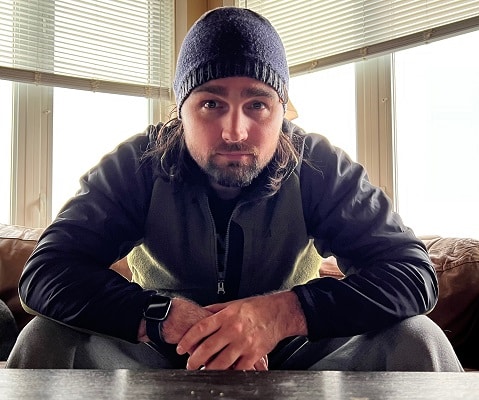
More Horro Features
Horror Through the Ages
A Journey Through Time and Terror
Technology in Horror
When gadgets become nightmares
Female Characters in Horror
From Victims to Heroes

